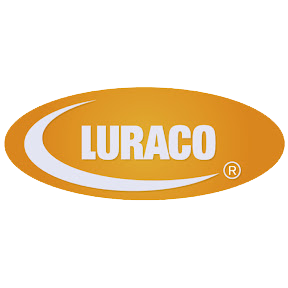Top Massage Chair Brands Based In south korea Brands
Here's what we recommend for:
Product Selection
4.2/5
Bodyfriend offers a range that’s smaller in volume but rich in personality. The Phantom Care serves the stylish entry-level buyer, the Hugchair 2.0 targets health-conscious, active users, and the Palace II represents the luxury pinnacle with unique body profiling and cognitive health content. All models share a common design language, but the differentiation across tiers is meaningful. That said, there’s no ultra-compact or foldable model for smaller spaces, and prices...
Customer Support & Warranty
4.1/5
Support is available through Bodyfriend USA’s distribution partners and includes 5 years on frame, 3 years on parts, and 1 year in-home labor. Customers in major metros benefit from showroom-level service, while rural buyers may experience longer technician wait times. User reviews are generally positive, with the company noted for responsive app support and helpful documentation.
Build Quality & Durability
4.5/5
Build materials are robust and resistant to wear. Frame components are steel, external shells are polycarbonate or ABS with soft-touch coating, and the upholstery is sweat-resistant. Chairs feel solid during recline and don’t rattle or creak, even when cycling through heavy stretch routines. Warranty servicing and components are handled from the U.S., though some internal parts are imported and may have longer wait times if not in stock.
Massage Variety
4.5/5
Bodyfriend’s flagship Palace II features a 6D massage system, which adds dynamic rhythm, direction, depth, and angle variation to traditional 4D movement. Combined with embedded heating rollers and reflexology-grade foot care, it delivers a full-body massage that feels highly human-like and reactive. Mid-range models like Hugchair 2.0 include advanced 4D with precise calf and foot treatments. Even the Phantom Care, while simpler, still incorporates multi-intensity compression and solid back coverage....

Global leader in medically inspired wellness chairs from Seoul, South Korea

Patented 6D massage system and “Moving Heat” technology

Flagship models combine AI voice guides, wellness tracking, and smart diagnostics

Bold design identity with luxury materials and LED accents

Integrated posture coaching and cognitive health content

Research-backed with in-house Brain Health R&D center
All Massage Chair Brands

How to Buy a Massage Chair: The Complete Guide
Buying a massage chair is a big decision. Not just because of the cost, but because it's a long-term investment in your health, comfort, and daily routine. This guide is here to help you cut through marketing terms, understand the tech, and choose the right chair based on your real needs—not just flashy features.
Step 1: Know What You’re Buying It For
Start by asking yourself: Why do I want a massage chair?
Are you trying to relieve lower back pain? Recover from workouts? Unwind after work? Or do you just want the luxury of an at-home spa experience?
If pain relief is your top priority, look for features like strong roller pressure, deeper massage depth (3D or 4D), and heated therapy. For general relaxation, you may not need the most advanced system—something with a few auto programs, Zero Gravity recline, and gentle rollers may be enough.
You also need to consider body size. Most chairs fit people between 5’0” and 6’4”, but if you’re outside that range—or on the heavier side—look for models that explicitly support big-and-tall users. Also think about space. Many chairs need 10–12 inches behind them to recline fully, but some models slide forward as they recline, requiring as little as 2–4 inches from the wall.
Step 2: Understand Roller Technology
Rollers are the heart of every massage chair. They move up and down your spine, side to side across your back, and in some cases, even in and out for deeper pressure.
There are a few types of roller systems:
-
2D rollers move up-down and left-right. They’re found in entry-level chairs and provide a surface-level massage.
-
3D rollers add in-out motion. They press into the back, simulating deeper tissue massage. Most people looking for real relief should start here.
-
4D rollers are like 3D, but they also vary in speed and rhythm. This creates a more lifelike feel—similar to how a human hand might vary pace or pressure naturally.
If you want a chair that can really work out tight muscles or replicate a skilled therapist’s hand, 4D is the sweet spot.
Step 3: Learn the Track Types
The track is what the rollers ride along.
-
S-Track follows the natural curve of your spine from neck to tailbone. It gives good upper-body massage, especially for back and shoulder pain.
-
L-Track or SL-Track continues into the seat and under the thighs. If you want your glutes, hamstrings, or sciatic nerve areas targeted, this is what you want.
-
Flex-Track or hybrid designs allow for both decompression stretches and full-length gliding, giving the benefits of S-Track stretch with L-Track reach.
Step 4: Don’t Ignore Zero Gravity
Zero Gravity positioning reclines your body so your knees rise above your heart. This reduces spinal pressure, improves circulation, and makes the massage feel deeper.
Most modern chairs have at least one Zero-G position. Some let you cycle through two or three different angles for reading, watching TV, or full-body decompression. It's not just a gimmick—it's one of the most effective ways to make a massage feel relaxing and restorative.
Step 5: Understand the Role of Airbags and Heat
Massage chairs often come with dozens of airbags that inflate and deflate to squeeze your shoulders, arms, waist, calves, and feet.
Don’t assume more airbags is always better. It’s more important that the zones you care about (like your calves or arms) are actually covered. Calf kneading, foot rollers, and adjustable air intensity are often much more valuable than sheer airbag count.
Heat therapy is another game-changer—especially when it moves with the rollers. Static lumbar heat pads are common, but some chairs offer heated rollers or calf heaters that help loosen muscles and enhance the massage effect.
Step 6: Figure Out Which Feature Level You Need
Massage chairs are typically sold in three tiers:
-
Entry-level models come with basic 2D rollers, a few auto programs, and basic lumbar heat. They’re ideal for casual users or small apartments.
-
Mid-range models usually include 3D rollers, better coverage, 40–60 airbags, dual-zone heating, and Zero-G. This tier works for most families or daily use.
-
Flagship models offer 4D or dual-mechanism rollers, AI body scan, moving heat, touchscreen controls, and stretch programs. They’re great for athletes, chronic pain users, or tech lovers.
Step 7: Ask the Right Pre-Purchase Questions
Before you buy, make sure you:
-
Measure your floor space, including full recline clearance
-
Check if the chair fits through your doorways
-
Verify your height and weight are supported
-
Understand the warranty: how many years on parts, frame, and labor?
-
Ask if there’s in-home service or just parts shipping
-
Look for reviews from users who’ve owned it for over a year
Also, try the chair if you can—either in a showroom or via video consultation with a dealer. What looks good on paper might not feel right for your body.
Step 8: Choose Where to Buy
You can buy from a local showroom, a big-box store, or online. Each has trade-offs.
-
Showrooms let you try before you buy and often include white-glove delivery, but prices can be higher.
-
Big-box stores (like Costco) offer great return policies and seasonal deals.
-
Online retailers have the widest selection but can vary in service quality. Be sure they offer a fair return window and honor warranties.
Step 9: Match Tech to Your Goals
If you're mostly looking to unwind after work, a 2D or light 3D chair with Zero-G and heat will likely satisfy you. If you're recovering from workouts, or you sit all day and deal with back tension, look for a 3D or 4D system with calf rollers and deep glute coverage. And if you’re managing chronic pain, opt for adjustable roller pressure, multiple heat zones, and good post-sale support.
Final Thoughts
Buying a massage chair isn’t just about tech specs. It's about how the chair will fit your body, your lifestyle, and your home. Understand your goals, test the comfort, and don’t let feature overload distract you from what actually matters: how it feels when you sit in it and close your eyes. Choose a chair that gives you the peace and relief you’re looking for—and you’ll thank yourself every day you come home to it.
KEEP READING











.png)



